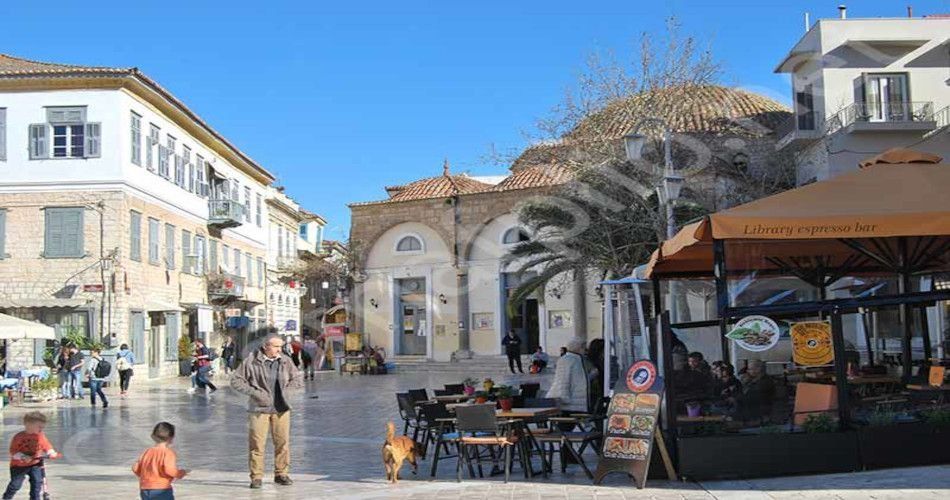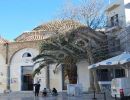Trianon - the old mosque
It is a Turkish building built during the First Turkish Rule and located on the northern side of today's Syntagma Square.
Its plan is simply rectangular and is covered by an almost hemispherical dome. The building presents a strict elegance that has its roots in Byzantium. It is built with stones and among them bricks, according to the Byzantine technique. The entrance to the main space was in the form of a gallery that was covered with three domes.
Of course, it is not possible to have an accurate picture of how it was then as with the elevation of Constitution Square a part of the lower part of the building was buried and its foundation, while the narthex and the columns were covered with masonry.
Several information is derived from the texts of the 17th-century Turkish traveler of Evliya Celebi: "Itch - Kale is a fortress of three parts" inside is a mosque, Fetichie. It was built by Sultan Suleiman. It is 50 feet long and 50 feet wide and has an elegant minaret covered by bricks. One climbs the minaret with a stone staircase with 65 steps. I went to the minaret and saw the city plan and the buildings and I planted them on a paper.
There is a large reservoir inside the Feichi Mosque because the inhabitants of Ich - Kale need this water. This tank in the summer has cool water. " In another description, Evliya mentions another mosque: "The market mosque is stone with a dome and a minaret, and outside the gate of the mosque there is a cemetery, and again it is a stone mosque with a dome and tiles and a stone minaret" . It is obvious that one of these mosques described by the Turkish traveler corresponds to the particular building.
During the 2nd Venetian domination, this building was used as a Catholic temple of Saint Anthony of Patabianos and the Franciscan Franciscan monks were given to the Capuchin Franciscan monks.
In the first years after the Greek Revolution, around 1823, the "Charity Company of Nafplion" was established in the building, which had the dual purpose of providing care to the poor, the sick and the orphans and, on the other hand, to establish a mutual education school So that the orphaned children who lost their parents in the liberation struggle and settled in Nafplion to have state care receive the elementary education.
So the company set up a kindergarten school, where at first 200 pupils were trained, most of whom came from poor families. For the children of affluent families there were private teachers for elementary education and for the upper ones there were more educated teachers.
Later, when Kapodistrias came to Greece - who supported elementary education, believing that it was the only one necessary for the people - he founded many schools of mutual education throughout Greece. In Nafplio, on the advice of his Dutrone educational advisor, Kapodistrias strengthened and improved this existing school. In particular, he undertook to keep it at his own expense and provided it with books and paintings.
Upon his arrival Othon proceeded with the abolition of the schools of mutual education, and he introduced the constitution of state elementary schools. So in the years of Othon the building housed the First Elementary School of Males where it operated in the same place for 53 whole years. In September 1884, the Municipality of Nafplio decided to transfer the school to another building, as the existing one was deemed unhealthy and unsuitable because of its location in the city center.
Today the venue functions as a cinema. Concerts also take place during the established Music Festival of the city. In order to meet the needs arising from this use, false ceilings were added in 1915, thus covering the domes, interior staircases and mezzanine of reinforced concrete. The building is in good condition but it is quite altered from its original form.
Map











